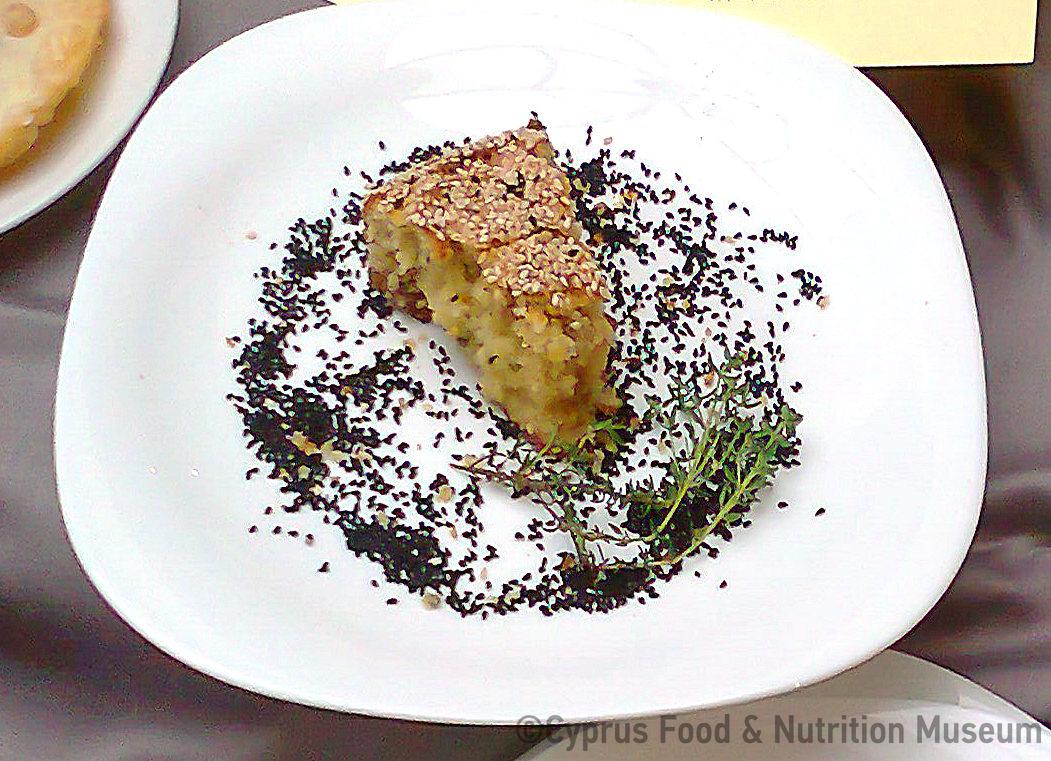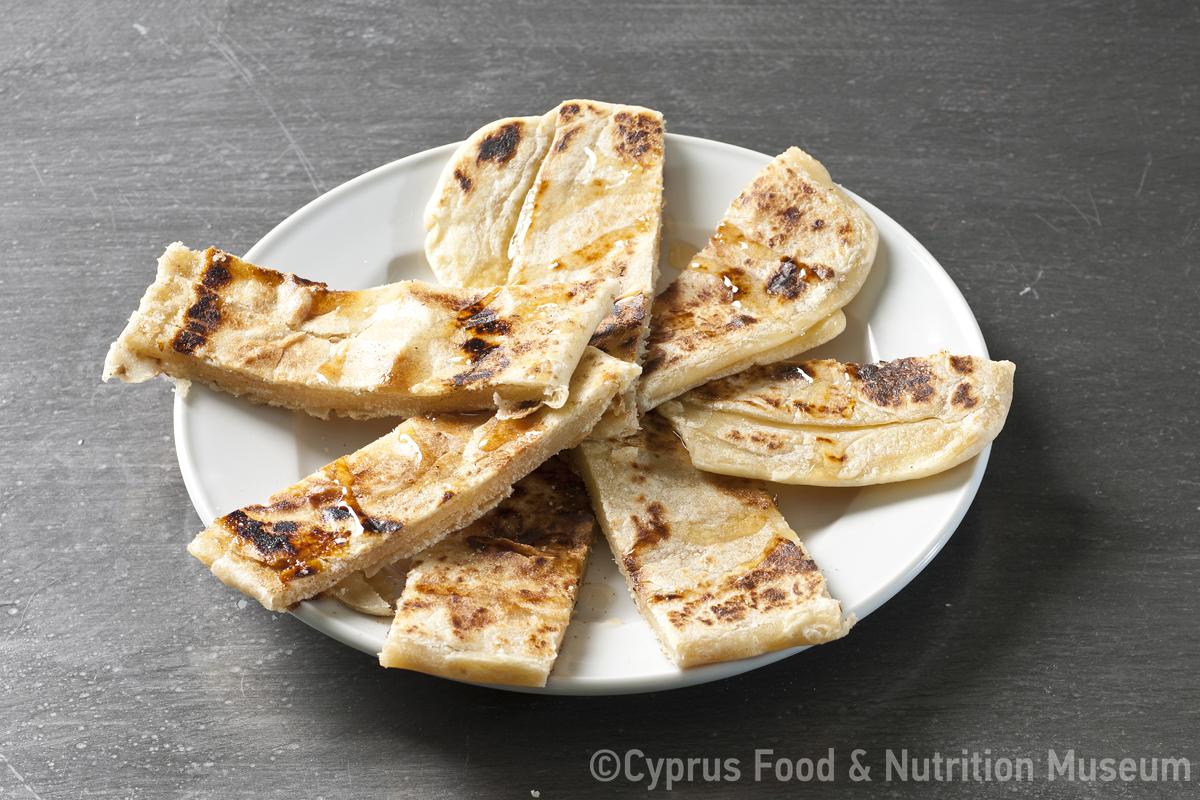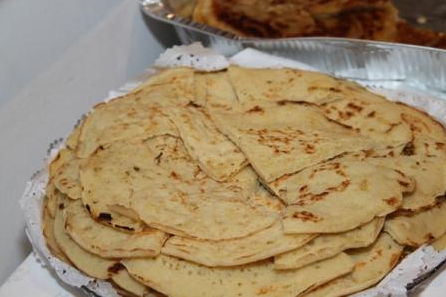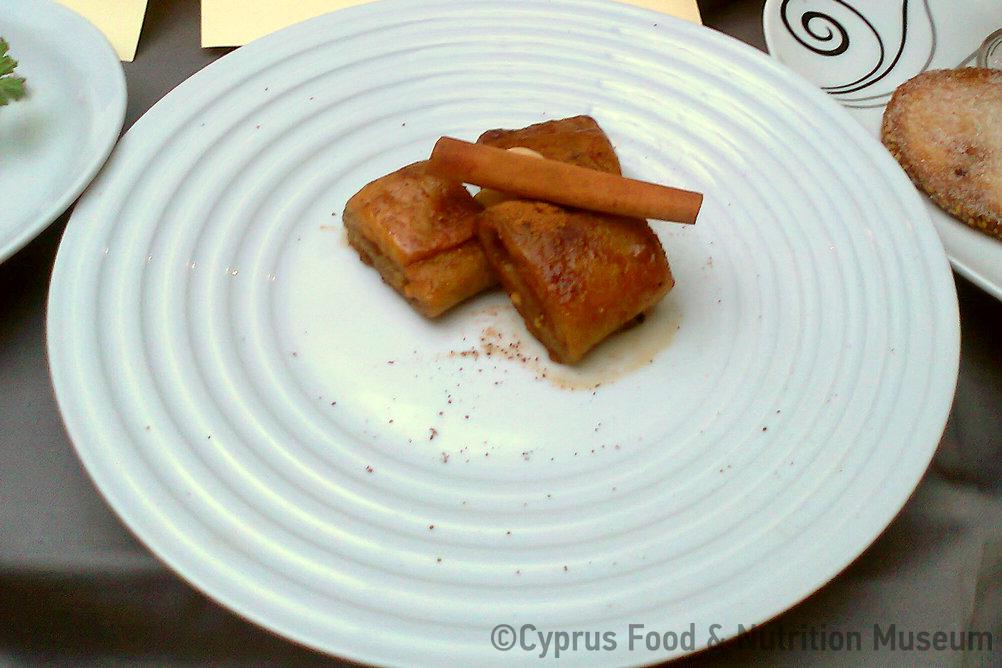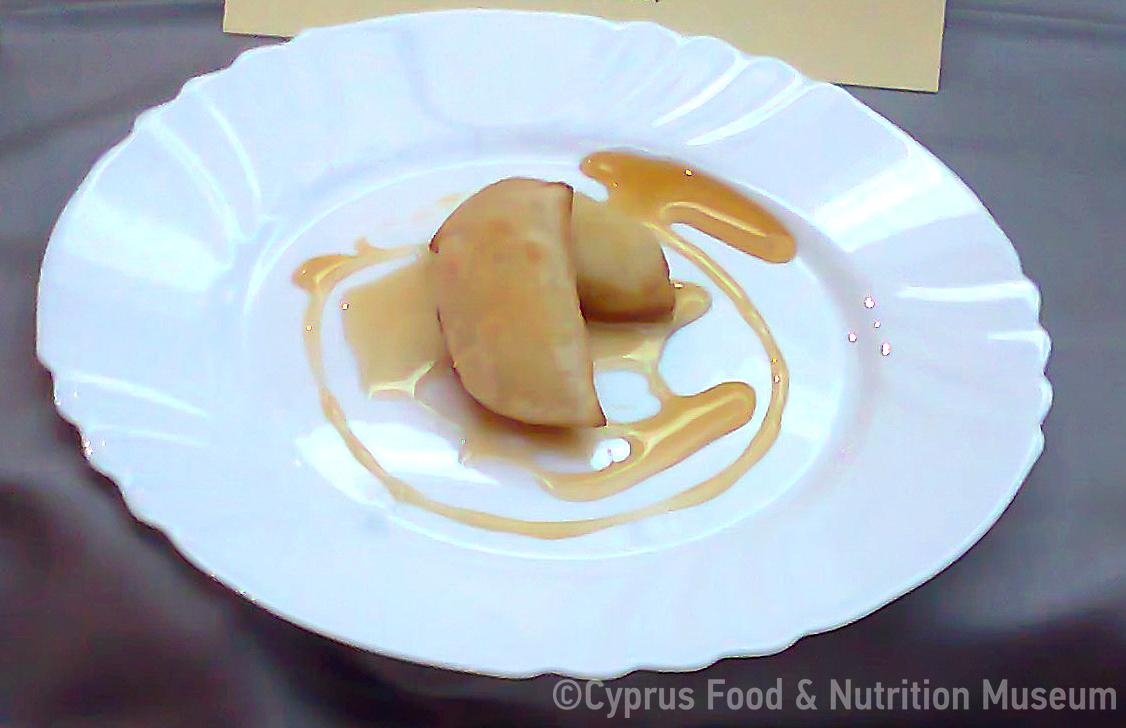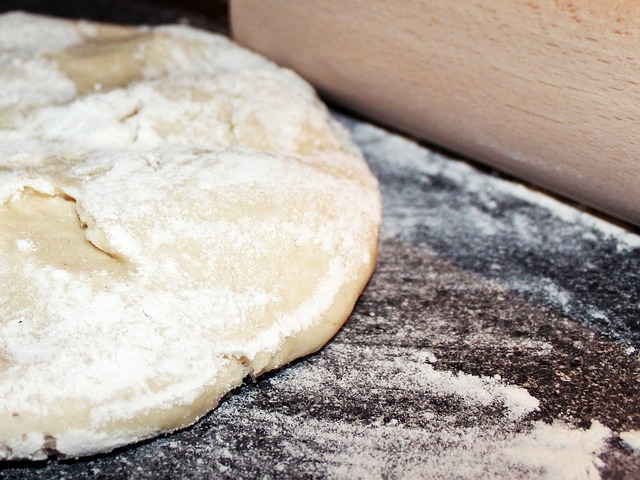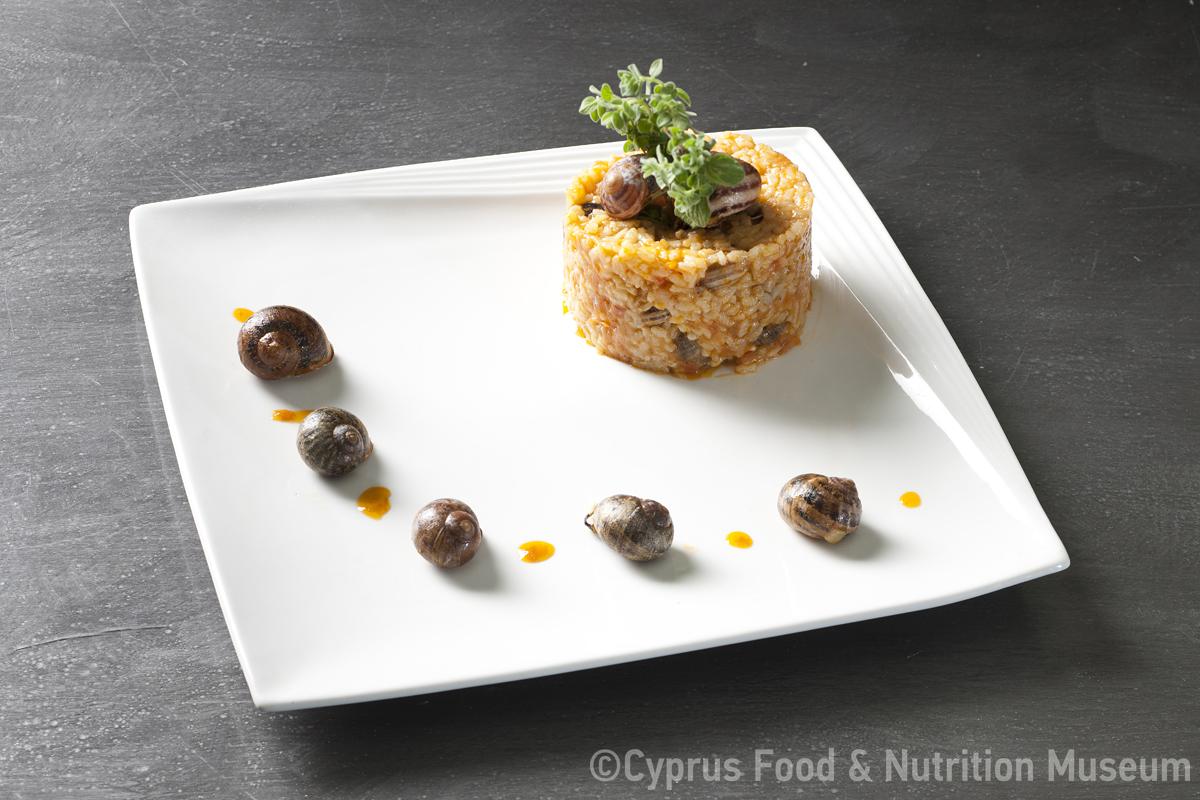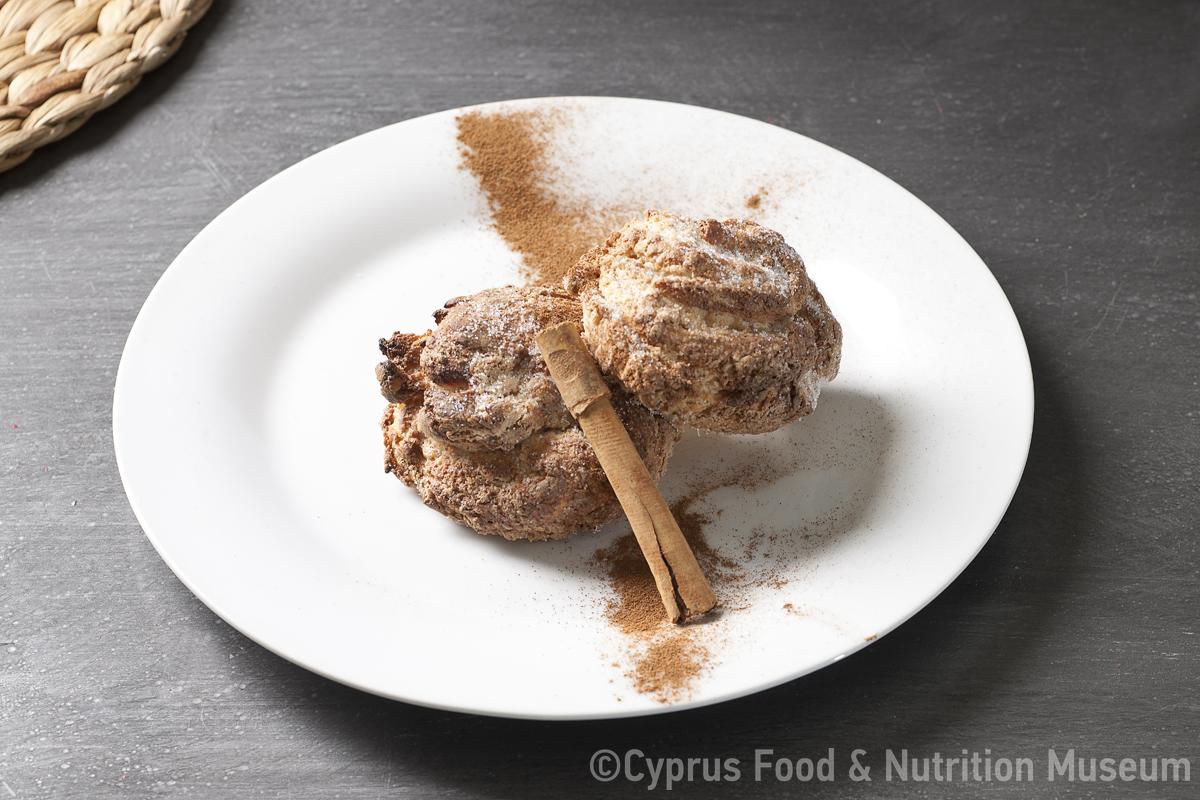Laggopittes were baked on the 'plakan', a slab about 3 cm thick, which was rounded and smooth and placed on the charcoal.
Name - Origin
Laggopites Rizokarpasou [Rizokarpaso = occupied community of Famagusta district] had the appearance of a honeycomb, were made from a special dough and were baked on the 'plakan', a slab about 3 cm thick, which was rounded and smooth and placed on the charcoal (MANRE, 2011)
< laganon (Andriotis); according to Karapotosoglou, from lalaggi < persian lalang (Yangoullis 2009, entry λαγγόπιττα - λαλαγγόπιττα,η, 245)
Laggopittes were made with a thin dough (a batter) similar to that used for sourdough loukoumades (flour, water, sourdough starter, optional a pinch of salt). The dough is covered and placed in a warm place to proof. Once the slab is hot, they would drip a bit of oil and smear it so that the dough would not stick to the slab. The batter would be gradually poured onto the slab and turned over when done on one side until both sides are cooked (Ioannidou 2007).
Functional and symbolic role
They are usually consumed either hot or cold with carob syrup and/or honey (MANRE, 2011).
In the village of Rizokarpaso, they were common during fasting periods, especially on the feasts of St John the Baptist (29 August) and the Exaltation of the Holy Cross (14 September) (Kypri - Protopapa 2003, 150-151, 153).
Additional information and bibliography
Different variations of laggopittes were also prepared in other areas of Cyprus, especially in villages of Paphos district (MANRE, 2011) see entry Laggopittes in the Food section.
Yangoullis K. G. (2009), Θησαυρός Κυπριακής Διαλέκτου. Ερμηνευτικό, Ετυμολογικό, Φρασεολογικό και Ονοματολογικό Λεξικό της Μεσαιωνικής και Νεότερης Κυπριακής Διαλέκτου, Βιβλιοθήκη Κυπρίων Λαϊκών Ποιητών, 70, Theopress Publications, Nicosia.
Kypri T. - Protopapa K. A. (2003), Παραδοσιακά ζυμώματα της Κύπρου. Η χρήση και η σημασία τους στην εθιμική ζωή, Publications of the Centre for Scientific Research, XVIII, Nicosia.
Ministry of Agriculture, Natural Resources and Environment, Department of Agriculture (2011), Gastronomic Map of Cyprus, Press and Information Office, Nicosia.
Documentary: Ioannidou M. (2007), Με γέφυρα τη γευστική μας παράδοση.
Stalo Lazarou, Argyro Xenophontos
